
What Are Twitter Lists?
Twitter Lists allow you to group individual twitterers and view their tweets separately from your timeline. For example, you can have a list of just your favorite Twitter friends. It's helpful in isolating the signal from the noise, and focusing on the people you want to follow more closely. But there's a myriad of other uses for lists. You can also share your lists publicly or subscribe to other people's lists.
One of the ways that you can make better use of Lists is through the Twitter List API, which offers full control over things for which the user interface remains cumbersome.
In this two-part tutorial within our broader Twitter API series, we'll review useful and innovative uses for lists. In the next tutorial, we'll dive into coding with the List API to take fuller advantage of these features.
Lists: A Neglected Feature
Twitter first introduced lists in 2009 but they've never been a high priority for the company. In fact, judging by the way they've managed the user interface for them the last few years, you might wonder if they wish they could drop the feature. Lists remain the sad stepchild of Twitter—out of sync with their efforts to simplify the interface and make their social network more accessible to the general public. Access to lists is often difficult and cumbersome through both mobile and desktop user interfaces.
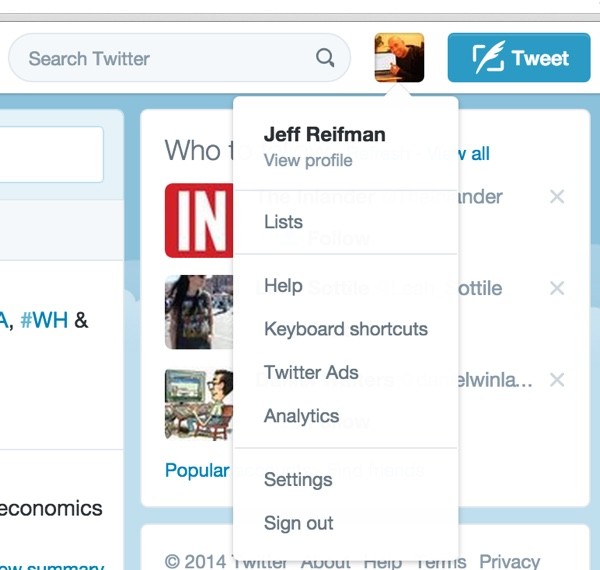
The fact is that Twitter Lists can be quite useful and powerful, but this power isn't easily accessed through the Twitter interface. For example, Lists are more accessible in third-party applications such as TweetDeck than they are in Twitter's own app:
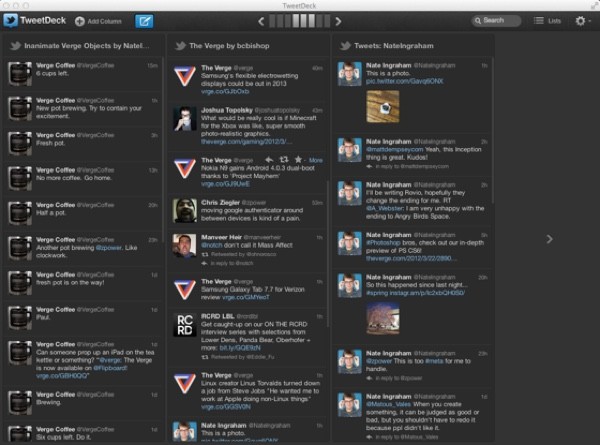
One of my pet peeves is how difficult Twitter makes it to add people to lists. There's no bulk account import. You have to visit each account page and add them individually:

This is one of the biggest drawbacks to curating and using lists.
Ways to Use Lists
There are a variety of ways to use Twitter lists. I've listed some of my favorites below. Please post your suggestions in the comments to share with other readers.
- Favorites: Follow favorite accounts or close friends so you can easily see all their tweets without having them lost within the endless noise which is Twitter.
- Topics: Follow a list of experts, colleagues or authors so you can view all their tweets above the noise, e.g. tech, productivity, or food.
- Clients: Following your clients and their brands helps you keep up with those you work for.
- Employees: Build a staff list for your company, news site or blog contributors to make it easy for Twitter users to engage more deeply with your team.
- Events and Conferences: Build a list of people who participate in an event for a specific hashtag such as #ferguson or #WDS2014 (World Domination Summit 2014).
-
Local: Follow accounts in your local geographic area, e.g. your neighborhood or city.
- Community: Build lists for people affiliated with a group such as your book club or membership organization.
- Functional: Follow corporate accounts posting job openings to assist your career search, or accounts of products and apps you own to track updates.
- Government: Follow public officials such as a list of council members for your city, or elected officials.
- Curation: Build and curate a popular list to increase your followers and build awareness for you as a moderator on Twitter. As you build the subscriber base of your curated list, people will seek you out to engage with you, and your account will have more exposure overall.
- Build Followers: See who's added you to their lists and what topics they see you as an expert in. Follow and engage more with these curators.
- Build Influence: If you browse the Lists > Member Of page of popular peers in your industry, you can identify popular curated lists whose founders you might want to seek out to engage with.
- Public Relations: Build lists of Twitter users mentioning or engaging with your brand account.
It's helpful to peek at how a few high profile Twitter users use lists as well. Here's Marc Andreesen, creator of Netscape and technology investor:
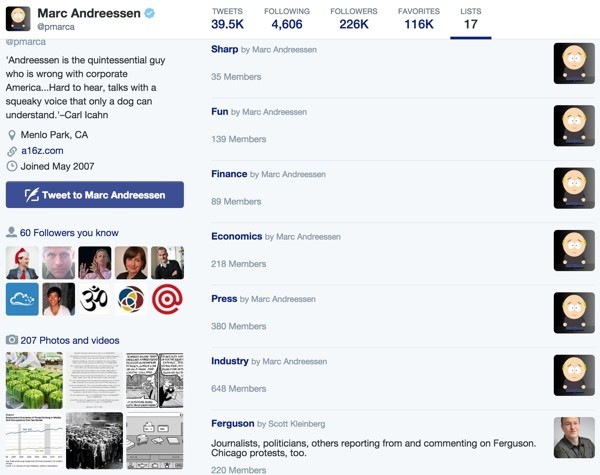
Notice how he keeps small lists of sharp people and fun people, and topical lists for Finance, Economics and Press. He also subscribes to other people's lists, such as Scott Kleinberg's Ferguson list.
Here's media guru Brian Stelter's lists:
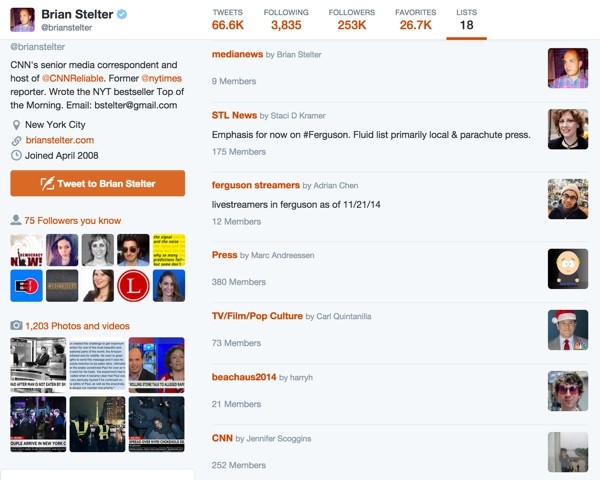
For the most part, he prefers to subscribe to lists curated by other folks—and who can blame him, given how difficult the curation user interface is?
It's useful to review the lists that people have added you to. It helps you see what topics people consider you an expert in and identify curators that may make sense to follow and engage with more.
Here's the summary of lists that I've been added as a member of:
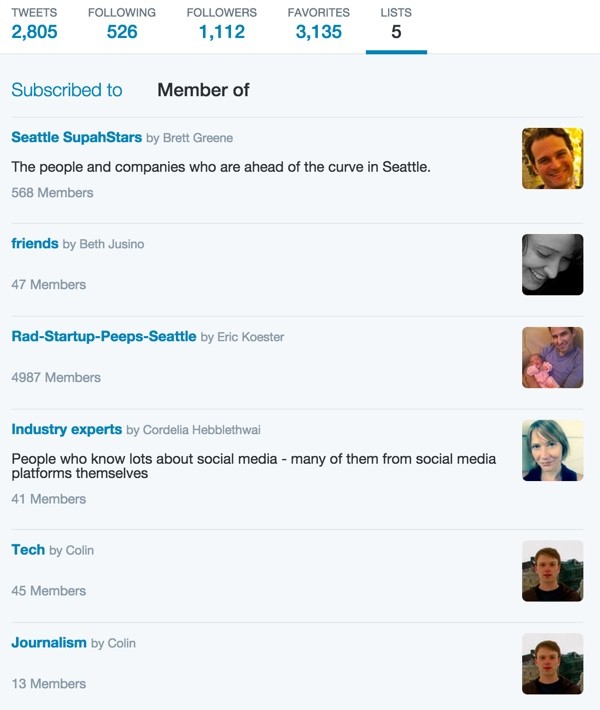
As an example, Eric Koester's put a lot of effort into curating his Rad Startups list. He may be worth following and engaging with more.
If I want to build my Twitter profile as Marc Andreesen has (by the way, you can follow me on Twitter right now), I can take a look at his lists page to find popular lists that have included him as an expert. Then, I can identify those curators as people I might engage on Twitter.

Overview of the Twitter API for Lists
There are roughly 19 APIs for Twitter Lists divided into three major areas:
You can accomplish things programmatically with lists that are very difficult to do manually or through the Twitter user interface.
Importing Members to a List
For example, you can add a comma-separated list of Twitter accounts to a list, something that's very time-consuming to do through the Twitter user interface.
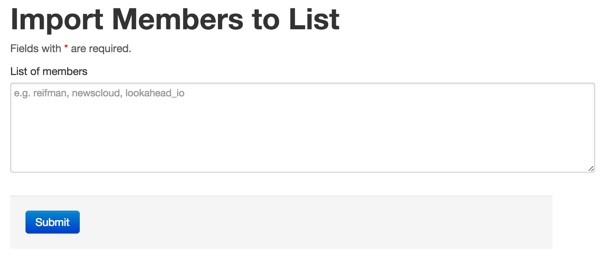
Convert a Saved Search to a Twitter List
Or you could convert content from a Saved Search in Twitter to a curated list. For example, I could programmatically browse tweets from a Saved Search for a conference such as World Domination Summit 2014 (hashtag: #WDS2014) and select individual Twitter accounts to add to a list for WDS2014.
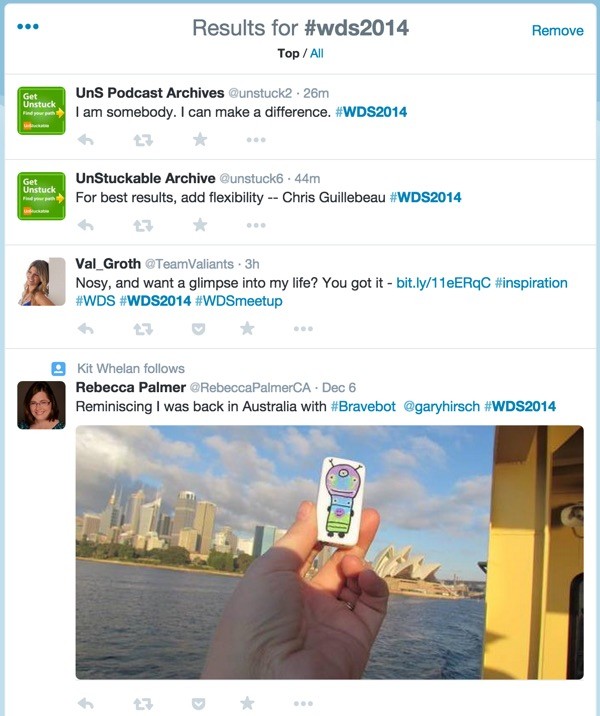
Public Relations
Similarly, you could programmatically build a private list of Twitter accounts that have negatively mentioned your corporate brand account or business.
Building a List of Local Twitter Users
Twitter doesn't expose its local search very easily through the user interface. However, I can use the API geo search capabilities to find tweets near to a GPS location. The results look something like this:

With the API, we can filter these results to identify Twitter users who are tweeting near to my GPS location. If they repeat frequently, we can identify likely neighborhood residents. Then, we can programmatically add them to a Twitter List representing Twitter users around my GPS location.
Email Digests of Lists
Since checking Twitter lists isn't easy in the Twitter application, we could deliver an email digest for list tweets once daily. Or we could deliver a filtered digest with just the most popular tweets or the tweets by users with high Klout rankings.
These are some of the ideas we're going to explore with code in the next tutorial. Again, please post your suggestions and favorite API scenarios in the comments. I'd love to hear them.
What's Next?
Now you know a bit about how people are using Twitter lists and what some of the user interface limitations for them are. You've also read about some ideas for taking full advantage of the Twitter List API. Coming up in the next tutorial, we'll walk through building list functionality into the Twitter API.
If you have any questions or suggestions, please post them in the comments. If you'd like to keep up on my future Tuts+ tutorials and other series, please visit my instructor page or follow @reifman.


Comments